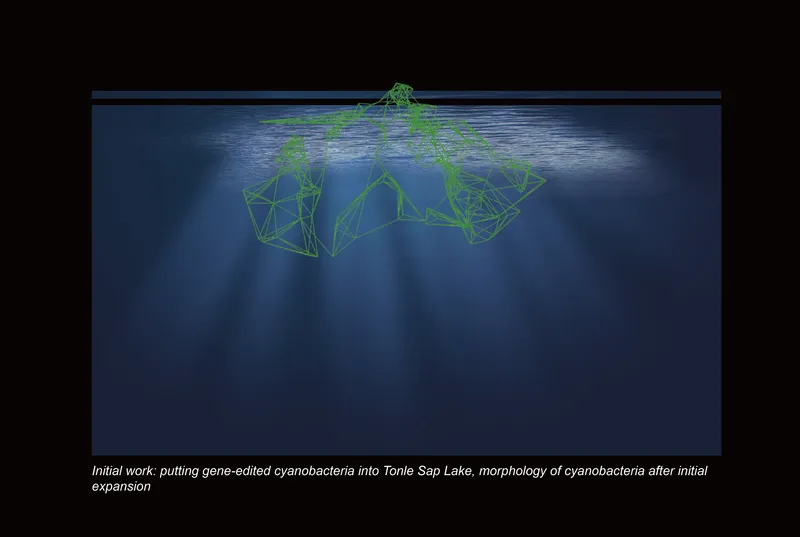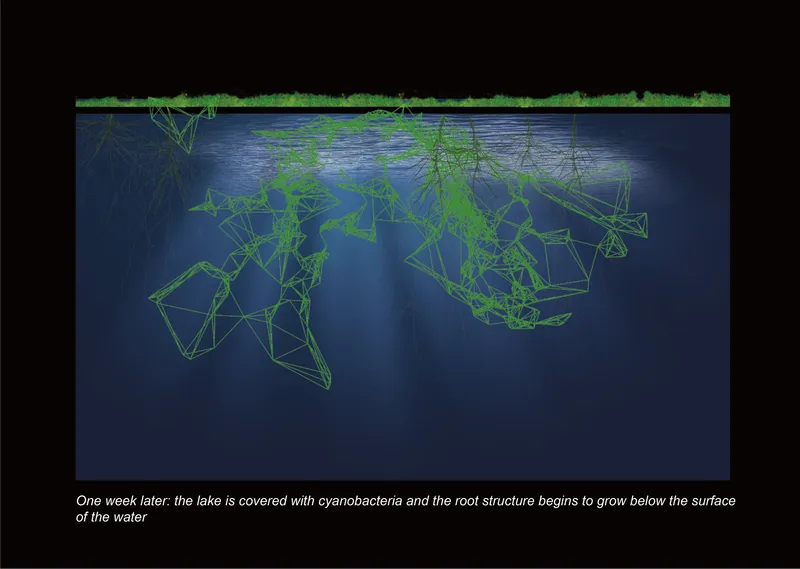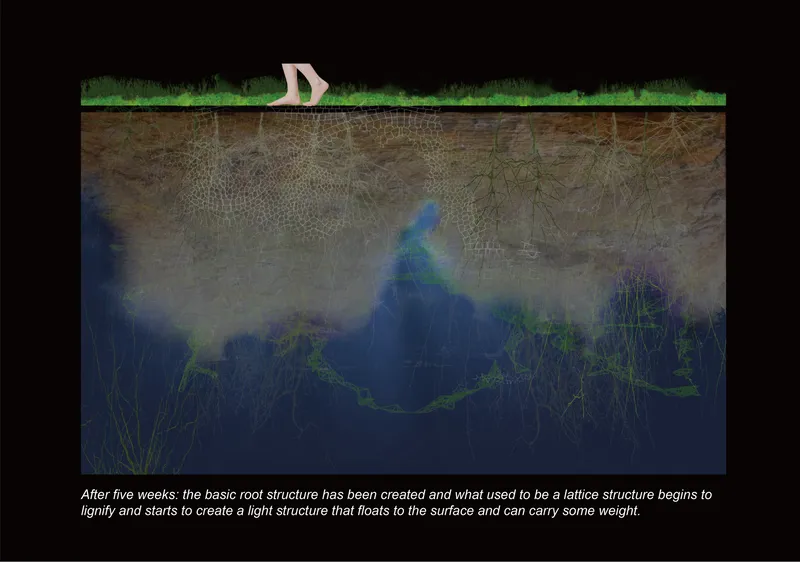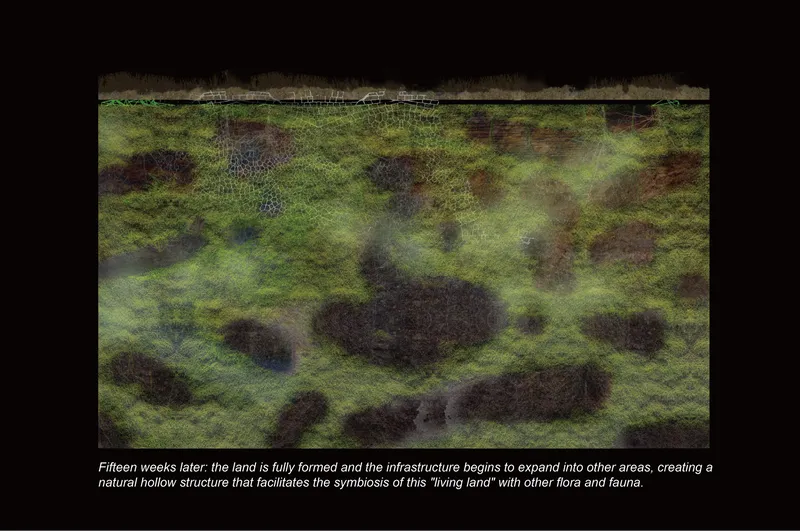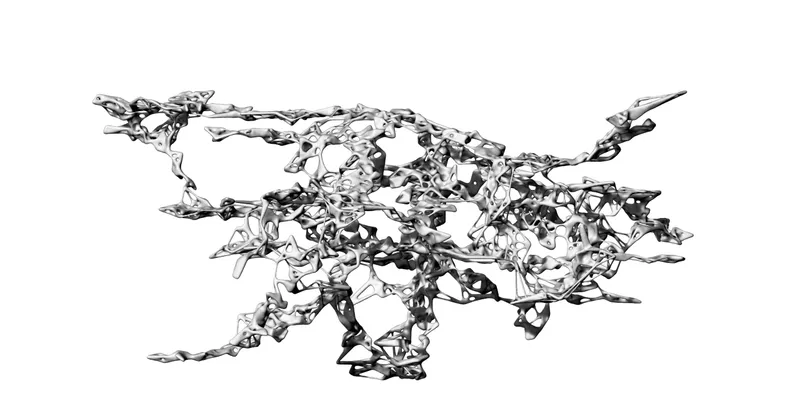With the increase in extreme weather events, especially urban flooding, innovative solutions are essential to enhance urban resilience. This study presents a ‘sponge city’ model that uses cyanobacteria-infused biomaterials to manage and mitigate urban flooding.
The core structure of the model consists of genetically modified cyanobacteria that are integrated with plant growth patterns, which solidify to form a lightweight, woody land mass. The coral-like structures below the water’s surface contribute to ecological restoration, providing nutrients and shelter for native aquatic species in Cambodia’s Tonle Sap Lake. This design not only supports local biodiversity, but also mitigates over-hunting and unscientific fishing practices.
In addition, sponge cities act as flood defences. The root systems of plants reduce wave energy, limiting land erosion and the power of flooding, while dense plant structures slow water flow and mitigate impacts on inland areas.
Before a sponge city can be built, the water quality of lakes needs to be improved. Unlike seawater, freshwater purification requires artificial intelligence and biofilms to ensure optimal conditions.
The sponge city model offers an ecologically sustainable solution to flooding and ecological imbalances. By combining traditional knowledge with modern bioengineering, the sponge city model provides a blueprint for flood management and bio-ecological balance for future urban design.
The ‘Sponge City’ model addresses urban flooding and ecological imbalance through cyanobacteria-based biomaterials, combining genetically modified cyanobacteria with plant growth for flood control and ecological restoration, providing a sustainable solution for flood control and ecological balance in future urban design.



